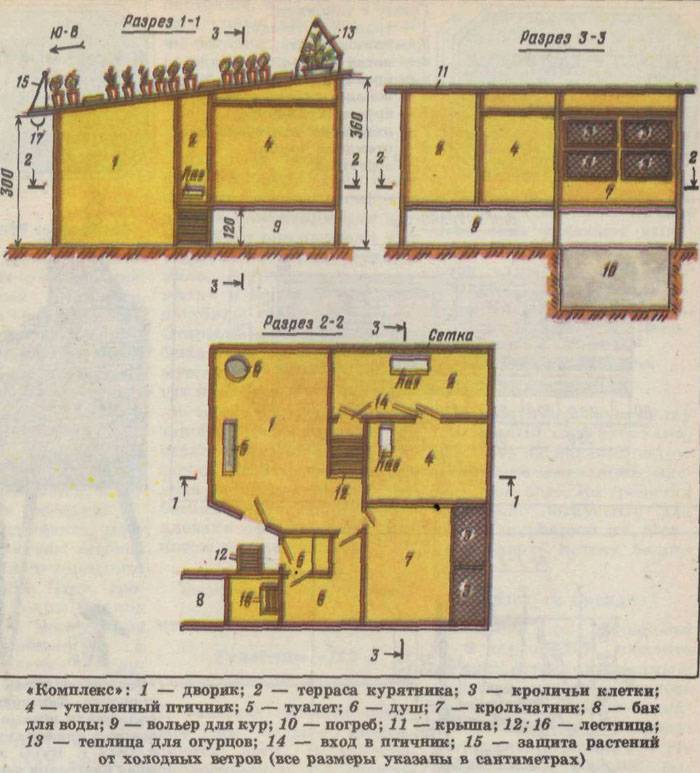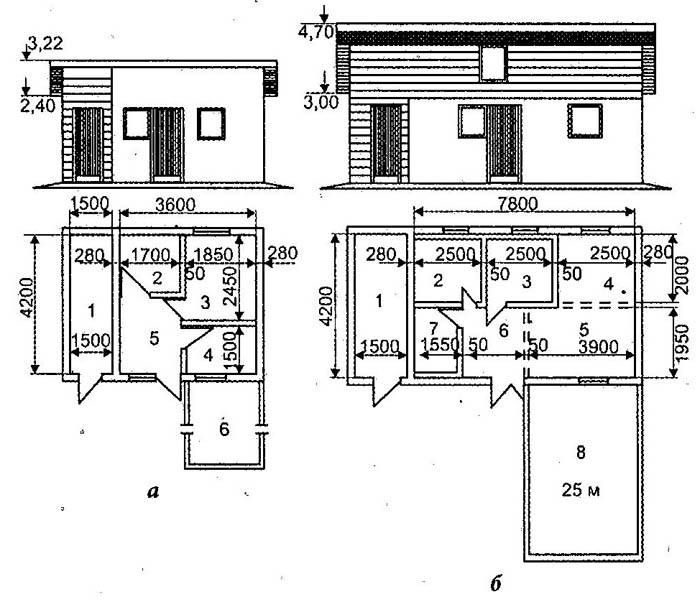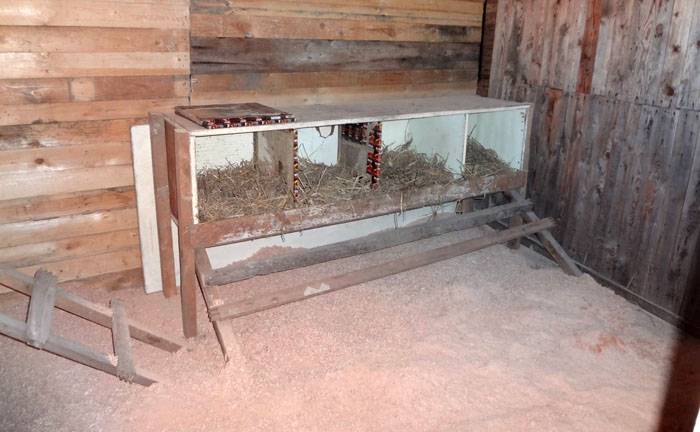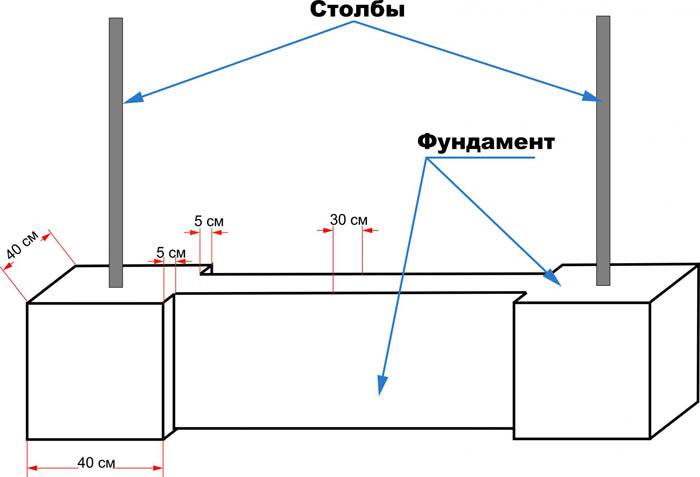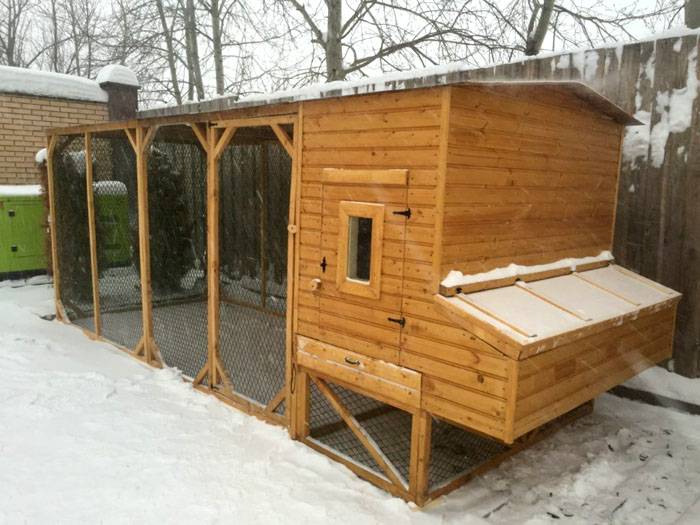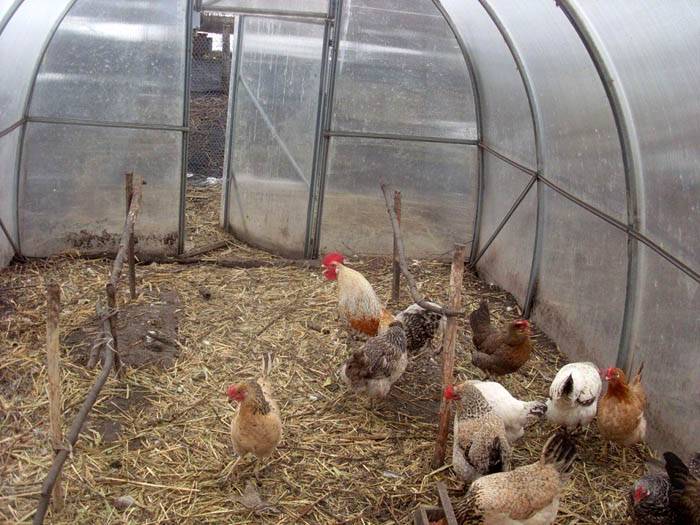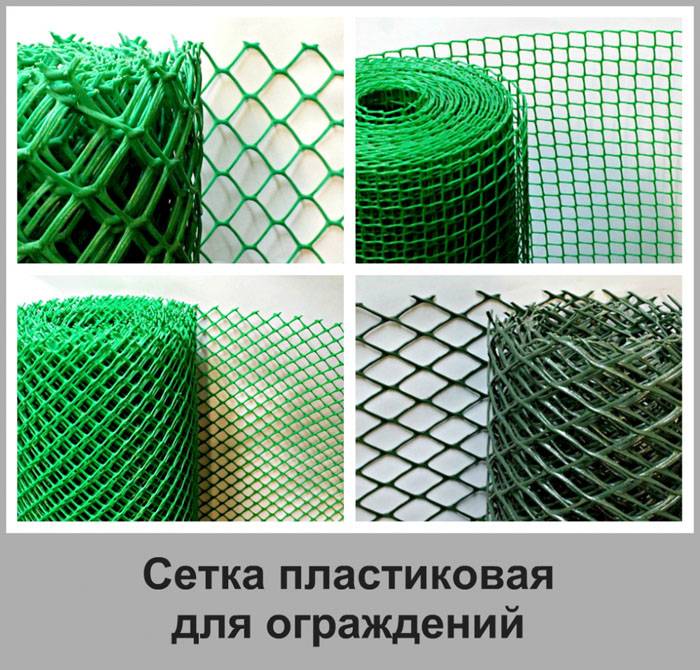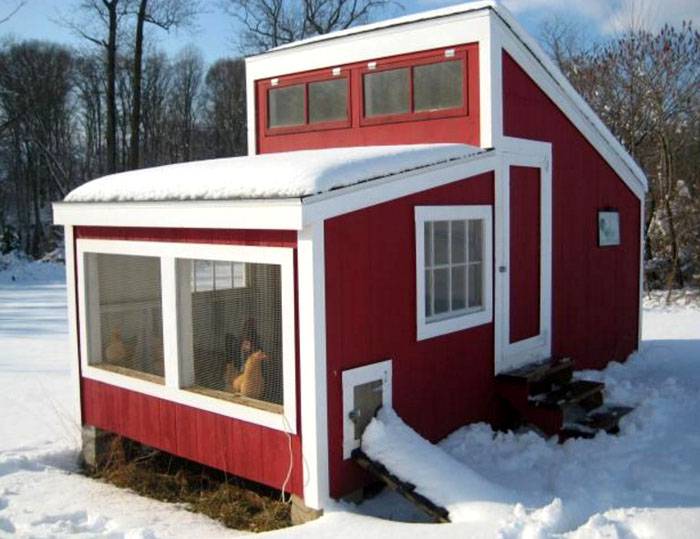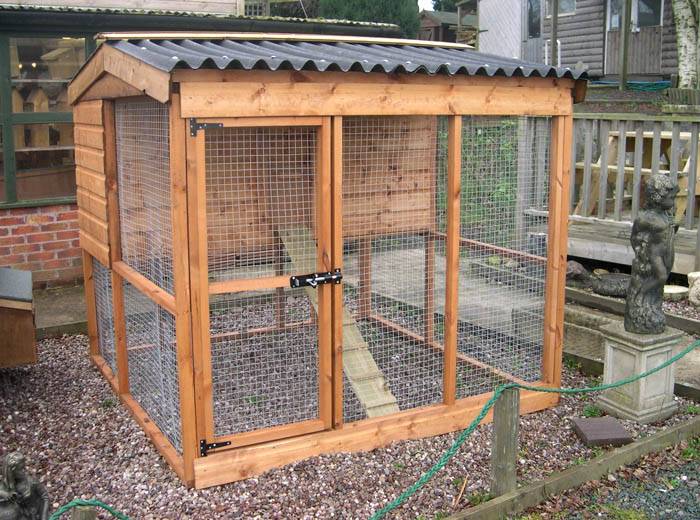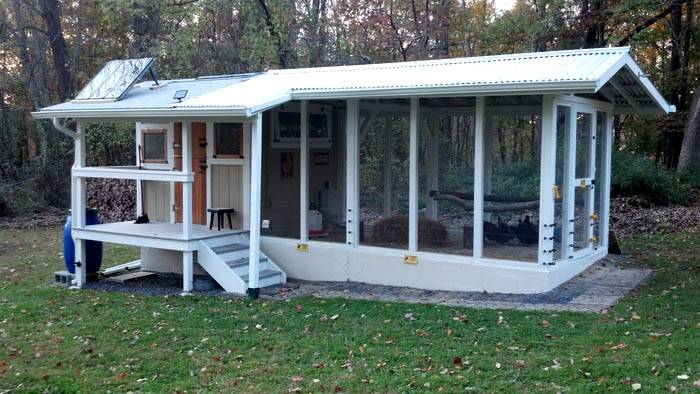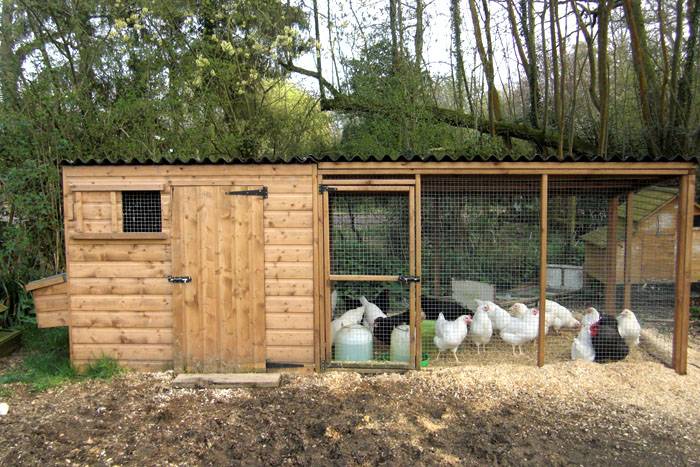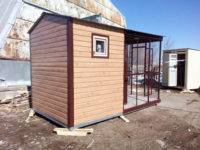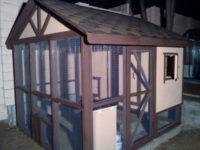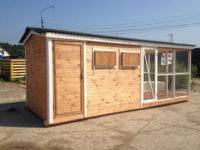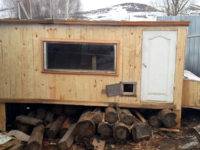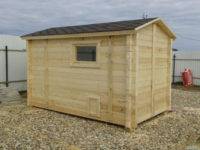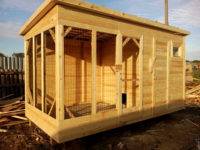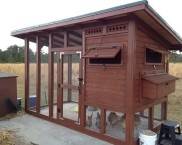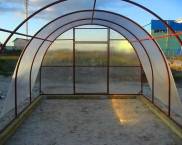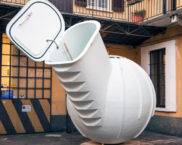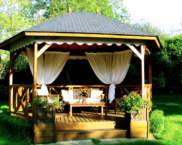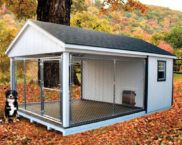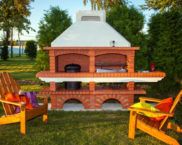How to build a winter chicken coop for 20 chickens with your own hands: step by step instructions with photo examples
Many villagers and farmers are involved in raising poultry for eggs and meat. Chickens are not demanding creatures, however, keeping the birds warm will help to increase the productivity of the clutch in the cold and increase the number of livestock. Anyone who knows how to handle construction tools can build a winter chicken coop for 20 chickens with their own hands. This design has its own characteristics, providing household utensils with comfortable conditions even in severe frosts.
The content of the article
- 1 DIY winter chicken coop for 20 chickens: necessary conditions for keeping birds
- 2 Do-it-yourself drawings for a warm chicken coop for 20 chickens
- 3 Required dimensions of a chicken coop for 20 chickens and installation site
- 4 What to make a do-it-yourself chicken coop for 20 chickens with photo examples
- 5 Description: how to build a warm chicken coop for 20 chickens
- 6 Arranging a chicken coop inside with your own hands: photos of interesting and correct options
- 7 Heating a chicken coop in winter: how to choose the right heater
- 8 Few recommendations
DIY winter chicken coop for 20 chickens: necessary conditions for keeping birds
Non-professional poultry farmers, who need 10 - 20 chickens to constantly obtain domestic eggs, often violate the necessary conditions for keeping birds in the cold. As a result, egg production drops, and the hens themselves begin to hurt. Therefore, it is important to build a winter chicken coop for 20 chickens with your own hands on time, observing the requirements for ventilation and the level of heat inside.
In addition to heat, there are several more features of keeping chickens in the winter, which should be considered when choosing a blueprint for construction.
Optimal conditions for laying hens in winter
All conditions for keeping poultry in winter come down to several points:
- balanced diet;
- maintaining the temperature above 10 ⁰С;
- artificial increase in daylight hours;
- maximum isolation of sockets;
- density of chickens no more than 1 pc. for 1 m².
In order not to reduce the productivity of chickens, they should be provided with proper nutrition. In winter, the diet of birds includes four feedings per day. At the same time, the mash is given in the morning and afternoon, grain - in the evening, while it must be crushed. Whole grains can be fed overnight, as digesting the high-calorie food will provide internal warmth to the chickens.
Note! In winter, hens need to make up for the lack of fresh grass by adding zucchini pulp, chopped carrots or frozen potatoes to the diet.
The temperature in the room where the birds are kept should not fall below 7-10 ⁰С. If you have not yet finished building a winter chicken coop for 20 chickens with your own hands, you can use heat guns, electric heaters, "potbelly stoves" and other means of increasing the temperature.
It is important to provide proper lighting for the birds. In winter, daylight hours are significantly reduced, which reduces clutch levels. Professional poultry farmers recommend turning on the lamps from 6 am to 9 am and evenings, but not making the day too long as the hens need rest. Observing all the conditions, the chickens will continue to actively rush even in severe frosts.
Do-it-yourself drawings for a warm chicken coop for 20 chickens
When choosing a chicken coop for 20 chickens among projects, it is worth considering the livestock and the required area. The absence of dampness and drafts is required. The lighting requirement is uniformity with good wiring.
Aside from the home itself, consider a grazing area that fits snugly around the coop. It should be fenced off so that hens do not go far from the heat. In the project, take into account all the dimensions and humidity levels that the ventilation system can control.
When preparing a drawing, do not forget that 1 chicken should have at least 1 m² of area. If there is a corral nearby, then 5-7 chickens can be placed in the same area. The schematic drawing should be detailed and descriptive, showing all dimensions.
If you are not used to drawing drawings on your own, here are some photo examples that can be useful in your work:
If you wish, you can buy a ready-made project from a construction company, where all sizes, lighting and ventilation systems will be taken into account, and an estimate for the purchase of building materials will be prepared.
Related article:
How to build a chicken coop with your own hands for 10 chickens. We will talk about this in the article, and we will consider not only schemes and materials, stages of construction, but also the needs of the bird and the optimal conditions for its maintenance.
Required dimensions of a chicken coop for 20 chickens and installation site
If you are thinking how to build a chicken coop correctly with your own hands and at no extra cost, then when drawing a drawing, take into account the dimensions that will help you calculate the amount of building material for work.
Before calculating, answer a few questions:
- why do you need to breed chickens;
- how many layers do you want to get;
- what size you want a house.
Helpful information! 10 chickens provide eggs for a family of 3 people.
The optimal size of a chicken coop is considered to be 2 by 5 m with a height of 1.9 m for 20 chickens, since such a room even retains a small amount of space for increasing the livestock. In this case, the walk should be 2 m wide and at least 7 m long.
Given these features, it is important to determine the location of the house. Choose a site with a slight incline, dry and elevated position. The paddock should remain on the south side.
Having picked up the site, think about the foundation. A tape option is suitable, you can also use a columnar one.All this is taken into account in a properly prepared project. Here are some secrets for building and preparing a project in the video:
What to make a do-it-yourself chicken coop for 20 chickens with photo examples
To get a really nice and warm chicken coop, purchase building materials and equipment for work. Someone equips the birds with ready-made rooms, for example, they supply greenhouses or sheds with heaters. Truly comfortable conditions for high productivity in laying hens will be in a real house with a walking area.
Prepare the required amount of bricks, boards, metal rods, sand and sawdust, glass and mesh, cement mixture for the foundation and mineral wool for insulation. And also don't forget about the tools:
- concrete mixer (if any) or container for mixing the solution;
- hammer and nails;
- door hinges and locks;
- other tools for the installation of ventilation and lighting systems.
There should be a cable for wiring, a lamp holder and a drawing of the entire structure at hand. Only then can you get to work.
Here is an example of interesting chicken houses made by their own chickens:
If you do not know how to build and work with tools yourself, seek help from the masters.
The cost of a finished warm chicken coop
If you decide to buy a winter chicken coop, the cost of the construction will depend on the area, selected materials and additional components. Prices may vary in different regions. Here's an example of several options:
Mikhail, St. Petersburg: “In the region, my father lives in a private house and raises chickens. So far, only 10 layers, but plans to expand, so I bought "Thomas" "for growth." I ordered the whole set with assembly and foundation, I am satisfied with the work. "
Maria, Bryansk: “I bought a model“ Chernushka ”for 15 laying hens for my mother. It has already stood for 2 winters, and it is really warm and cozy in it. "
Pavel, Moscow: “In the region, the mother breeds a bird, she has no time for construction, I ordered a“ Dodonov double ”. Made quickly, it is warm and good walking. "
Such insulation for the winter will be enough to maintain the productivity of chickens. Laying hens will feel comfortable, and with additional lighting, egg production will remain the same.
Ventilation in the hen house in winter
How to make ventilation in a chicken coop with your own hands so that the bird is comfortable in winter and summer? Quite simple if you follow all the recommendations. There are two types of room ventilation:
- natural;
- supply and exhaust.
The first is obtained automatically due to the arrangement of windows and an exit for chickens during the construction process. Moreover, it is better to place window openings opposite each other, providing maximum ventilation.
Helpful information! Install a pipe diameter hole under the ceiling that allows draft-free air flow.
It is possible to create artificial ventilation of the room, which will take a little more time, but in winter the heat will be better retained. To do this, you can make two pipes or install a fan in the wall.
If choosing option with pipes, then one tube are arranged vertically, where the edge of the floor (not more than 25-30 cm) and put into an arc slightly above the outside of the roof. The second tube at the other end of the chicken coop and its top high above the building.
Any of the selected methods provide an adequate supply of fresh air to the birds, which is necessary for the health of laying hens.
Arranging a chicken coop inside with your own hands: photos of interesting and correct options
How to equip a chicken coop inside for layers so that the chickens are comfortable? The rules for the location of the poles, the height and width of the nests, and also create a sufficient amount of artificial lighting.
The hen spends a lot of time on the roost, on the floor or in the nest. Perches - poles, made of boards 5 to 6 cm This is a necessary condition for the chicken legs, so they do not hurt..
They must be mounted at a distance of 40-50 cm from the floor, and between them to comply with a length of 35 cm. It is impossible to fix the beam close to the wall of her need indentation 25 cm.
Note! It is not necessary to organize the roost at several levels, in such a situation chickens fighting over the desire to occupy the upper shelf.
Inside the coop arrangement must be comfortable and practical. There are requirements to the total number of poles. Each layer requires 25 cm of free space. Masonry installed 1 slot for 5-6 chickens, this amount is sufficient, as the day and night the birds do not lay eggs.
To nest taken baskets or wooden boxes. The optimum depth - 40 cm, while the height and width of 30 cm at the bottom be sure to lay sawdust or straw, to be comfortable hen.. As lighting for a small house, one or two lamps are enough. Distribute them in different parts of the chicken coop and do not forget the timely switching on and off light.
Here are a few examples of interesting photo and an accurate internal arrangement of homemade chicken house:
Heating a chicken coop in winter: how to choose the right heater
With the proper construction of the winter hen house, you can do without an auxiliary electric heater. This factor also affects the climate zone. If winter frosts often fall below -30 ⁰S, you will need to install an additional heat source.
The most safe and suitable are infrared electric heaters. Their operating principle is to disperse the infrared rays that are similar to the sun. On sale is a panel that is well heated rooms, without taking up much space.
Electric heating is safer than gas, but because of the intermittent nature of power, frequent disconnection may occur. But there is no emission of harmful combustion products and combustion is correctly connected is significantly lower.
Advantages of an infrared lamp for heating a chicken coop
Infrared lamps for a chicken coop are considered the easiest and most convenient way to heat. They did not burn the air, keeping the necessary humidity. At the same time serve as a source of heat and light, so there is no need to do additional wiring.
Eek lamp can be red or transparent. The first embodiment provides more heat, but the latter is used as a light source.
According to professional poultry farmers, such equipment has a high efficiency, increasing productivity and hens young gain. At the same time, the range of lamps on the market is wide, the most popular and proven manufacturers are as follows:
- Philips: high cost, but also reliable;
- Osram: similar to the first embodiment;
- ECI: affordable price.
Note! One 250 W lamp heats a 12 m² space.
It is enough to use one lamp to heat the chicken coop in winter, which is beneficial and efficient. The cost is different, for example, an IKZK 220-250 mirror lamp costs only 180 rubles.
DIY heating for a chicken coop in winter without electricity
If a pledged layer of thermal insulation for severe frosts is not enough to insulate the finished chicken coop, choose a suitable material for insulation. They can sheathe walls and ceilings. The process is no different from decorating a regular living space.
Do not forget about the need to insulate windows and the entrance for chickens, as cold air will flow through the cracks. For window openings, you can use standard methods of insulation using masking tape, and door slots can be filled with foam and the process of warming the canvas itself can be carried out.
Note! It is necessary to create a litter for the floor for the hens to live comfortably.
For deep bedding, a layer of slaked lime is applied to the floor at a rate of 1 kg per 1 m², then a straw layer or sawdust with shavings can be laid. We can also apply natural heat-insulating material: fallen leaves, peat or a mixture of straw and manure.
During operation, the litter will be compacted, so it must be periodically agitated with the addition of new material. If the chicken coop is located in a mild climate without severe frosts, the listed insulation methods are quite enough.
To understand all the nuances of self-insulation, watch the video on the topic:
Buy ready-made version
If you don't want to insulate or build a laying house yourself, you can always buy a winter chicken coop for 20 chickens. There are such turnkey constructions in every region. The cost is different depending on the area, insulation method, installation and bird walking.
Here are some examples of ready-made chicken coops with or without installation:
Ekaterina, Tula: “I breed chickens in a private house, the livestock is 15 so far, I plan to increase it. It is difficult to keep it in winter without proper conditions, so I ordered a turnkey Hercules model. We assembled it quickly, everything was arranged correctly inside ”.
Maria, Khabarovsk: “I liked the La-Flash 20 model externally and the presence of a heater. We did it quickly, in one day. We connected everything ourselves, all that remained was to make the flooring. Laying hens endured the winter perfectly ”.
Dmitry, Samara: “There was no time to build either a house or a spree myself, but the chickens had already been brought in. The Orpington model just saved the day last fall. We overwintered with a good harvest and no losses. "
You can choose any design with or without walking, with insulation or make it yourself, as well as with other additional functions. The main thing is that the wintering of the birds goes smoothly and warmly.
Few recommendations
Any household utensil needs its own home, especially chickens if you do not want to reduce the number of eggs and reduce the number of livestock. If you are planning to build a winter chicken coop yourself, consider the following points:
- prepare and think over a drawing with a detailed project in advance;
- select the type of foundation and purchase the necessary building materials;
- when erecting walls, floors and roofs, make sure that there are no large gaps;
- make the correct ventilation and lighting system;
- insulate the room during construction;
- prepare perches and nests for chickens according to the number of birds;
- install a thermometer to monitor temperature changes.
All this will help to maintain the livestock and even increase the clutch of eggs. If you do not want or cannot build a chicken house on your own, contact the professionals and order a turnkey winter chicken coop.











